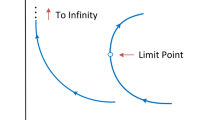Abstract
Space propulsion systems play an increasingly important role in planning of space missions. The traditional method for design of space propulsion systems includes numerous design loops, which does not guarantee to reach the best optimal solution. Multidisciplinary Design Optimization (MDO) is an approach for the design of complex systems that considers a design environment with multiple disciplines. The aims of this study are to implement and compare Multidisciplinary Feasible and Collaborative Optimization architectures for the multi-Objective optimization of a bi-propellant space propulsion system design. Several disciplines such as thrust chamber, cooling, and structure were exploited in a proper combination. The main optimization objectives in the MDO frameworks were to minimize the total wet mass and maximize the total impulse by considering several constraints. Furthermore, Genetic Algorithm and Sequential Quadratic Programming are employed as the system-level and local-level optimizers. The presented design methodology provides an interesting decision making approach to select the best system parameters of space propulsion systems under conflicting goals.














Similar content being viewed by others
References
Alexandrov NM, Hussaini MY (1997) Multidisciplinary Design Optimization: State of the Art. In, 1997. Proceedings in Applied Mathematics Series. Soc Ind Appl Math, p 388
Alexandrov NM, Lewis RM (2002) Analytical and computational aspects of collaborative optimization for multidisciplinary design. AIAA J 40:301–309. doi:10.2514/2.1646
Arias-Montano A, Coello Coello C, Mezura-Montes E (2012) Multi-objective evolutionary algorithms in aeronautical and aerospace engineering evolutionary computation. IEEE Trans on 16:662–694
Balesdent M, Bérend N, Dépincé P, Chriette A (2012) A survey of multidisciplinary design optimization methods in launch vehicle design. Struct Multidiscip Optim 45:619–642. doi:10.1007/s00158-011-0701-4
Chen H, Wen C-Y, Yang C-K (2012) Numerical simulation of air-he shock tube flow with equilibrium air model. AIAA J 50:1817–1825. doi:10.2514/1.J051129
Coats DE (2004) Assessment of thrust chamber performance. In: Liquid Rocket Thrust Chambers. Progress in Astronautics and Aeronautics. Am Inst Aeronaut Astronaut, pp 601–620. doi:10.2514/5.9781600866760.0601.0620
Grujicic M, Arakere G, Sellappan V, Ziegert JC, Kocer FY, Schmueser D (2009) Multi-Disciplinary Design Optimization of a Composite Car Door for Structural Performance, NVH, Crashworthiness, Durability and Manufacturability Multidiscipline Modeling in Materials and Structures 5:1–28 doi:citeulike-article-id:3904582
Hart T (1959) Design criteria and analyses for thinwalled pressurized vessels and interstage structures. Lockheed Missiles and Space Company
Hart C, Vlahopoulos N (2010) An integrated multidisciplinary particle swarm optimization approach to conceptual ship design. Struct Multidiscip Optim 41:481–494. doi:10.1007/s00158-009-0414-0
Hearn HC (1988) Thruster requirements and concerns for bipropellant blowdown systems. J Propuls Power 4:47–52. doi:10.2514/3.23030
Howell JC, Oberstone J, Stechman RC (1969) Design criteria for film cooling for small liquid-propellant rocket engines. J Spacecr Rocket 6:97–102. doi:10.2514/3.29545
Humble R, Henry GN, Larson WJ, United States. Department of Defense., United States. National Aeronautics and Space Administration. (1995) Space propulsion analysis and design. Space technology series, 1st edn. McGraw-Hill, New York
Huzel DK, Huang DH, Arbit H (1992) Modern engineering for design of liquid-propellant rocket engines. Progress in astronautics and aeronautics,, vol 147, Rev., updated, and enl. / edn. American Institute of Aeronautics and Astronautics, Washington, DC
Johnson L, Meyer M, Palaszewski B, Coote D, Goebel D, White H (2013) Development priorities for in-space propulsion technologies. Acta Astronaut 82:148–152. doi:10.1016/j.actaastro.2012.05.006
Konak A, Coit DW, Smith AE (2006) Multi-objective optimization using genetic algorithms: a tutorial. Reliab Eng Syst Saf 91:992–1007
Kroo I, Altus S, Braun R, Gage P, Sobieski I (1994) Multidisciplinary optimization methods for aircraft preliminary design. In: 5th Symposium on Multidisciplinary Analysis and Optimization. Multidisciplinary Analysis Optimization Conferences. American Institute of Aeronautics and Astronautics. doi:10.2514/6.1994-4325
Macdonald M, Badescu V (2014) The international handbook of space technology. Springer, Berlin
McBride BJ, Gordon S (1996) Computer program for calculation of complex chemical equilibrium compositions and applications II. User’s Manual and Program Description. National Aeronautics and Space Administration
Mirshams M, Naseh H, Fazeley HR (2014) Multi-objective multidisciplinary design of space launch system using holistic concurrent design. Aerosp Sci Technol 33:40–54. doi:10.1016/j.ast.2013.12.015
Orlando J, Meyers JF, Bruhn EF (1967) Analysis and design of missile structures. Tri-state Offset Company
Shine SR, Sunil Kumar S, Suresh BN (2012) A new generalised model for liquid film cooling in rocket combustion chambers. Int J Heat Mass Transf 55:5065–5075. doi:10.1016/j.ijheatmasstransfer.2012.05.006
Sobieszczanski-Sobieski J, Haftka RT (1997) Multidisciplinary aerospace design optimization: survey of recent developments. Struct Optim 14:1–23. doi:10.1007/BF01197554
Sutton GP (2006) Technology and Hardware. In: History of Liquid Propellant Rocket Engines. Library of Flight. American Institute of Aeronautics and Astronautics, pp 33–240. doi: 10.2514/5.9781600868870.0033.0240
Sutton GP, Biblarz O (2010) Rocket propulsion elements, 8th edn. Wiley, Hoboken
Turner MJL (2009) Rocket and spacecraft propulsion : principles, practice and new developments. Springer-Praxis books in astronautical engineering, 3rd edn. Springer published in association with Praxis Publishing, Berlin; Chichester
United States. National Aeronautics and Space Administration (1976) Pressurization systems for liquid rockets. Nasa Sp-8112. NASA, Washington, Springfield, Va
Wagner WA, United States. National Aeronautics and Space Administration. (1974) Liquid rocket metal tanks and tank components. Nasa Sp-8088. National Aeronautics and Space Administration, Washington
Author information
Authors and Affiliations
Corresponding author
Rights and permissions
About this article
Cite this article
Fazeley, H.R., Taei, H., Naseh, H. et al. A multi-objective, multidisciplinary design optimization methodology for the conceptual design of a spacecraft bi-propellant propulsion system. Struct Multidisc Optim 53, 145–160 (2016). https://doi.org/10.1007/s00158-015-1304-2
Received:
Revised:
Accepted:
Published:
Issue Date:
DOI: https://doi.org/10.1007/s00158-015-1304-2




